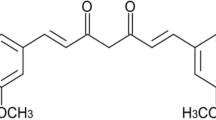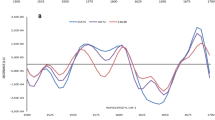Abstract
Caseins and ovalbumin are frequently used as wine fining agents to remove undesirable compounds like polymeric phenols. Their presence in wines is a subject of concern because may cause adverse effects on susceptible consumers, especially when their presence is not labeled. A key step for its determination is trypsin digestion, which is considered the bottleneck of bottom-up approach workflow because usually requires several hours. To reduce this time, the objective of this work was to carry out a chemometric optimization of trypsin digestion method applying infrared, microwave and ultrasound energies to determine caseins and ovalbumin in wines. The conditions of each accelerated digestion method were optimized using a Response Surface Methodology based on central composite design. The parameters optimized were digestion time and trypsin: protein ratio. The response variable evaluated was digestion yield, which was determined through the peak area of each protein transition determined by liquid chromatography-mass spectrometry. The most effective technique was microwave followed by ultrasound and infrared. Since optimal values of microwave and ultrasound-assisted digestion were the same, the later was chosen considering sample preparation and cost. Applying the proposed approach, a reduction of ca. 140 and 240-fold on digestion time was achieved compared with optimized and non-optimized conventional methods, respectively. With this workflow, both proteins were digested in a single 3 min process allowing its detection by liquid chromatography-mass spectrometry at µg L−1 level, which is ca. 60 times lower than the current limit of 0.25 mg L−1.



Similar content being viewed by others
References
Angulo MF, Flores M, Aranda M, Henriquez-Aedo K (2020) Fast and selective method for biogenic amines determination in wines and beers by ultra high-performance liquid chromatography. Food Chem. https://doi.org/10.1016/j.foodchem.2019.125689
Bao H, Liu T, Chen X, Chen G (2009) Efficient in-gel proteolysis accelerated by infrared radiation for protein identification. J Proteom Res 7:5339–5344. https://doi.org/10.1021/pr800572e
Blum H, Beier H, Gross HJ (1987) Improved silver staining of plant proteins, RNA and DNA in polyacrylamide gels. Electrophoresis 8(2):93–99. https://doi.org/10.1002/elps.1150080203
Chambery A, del Monaco G, Di Maro A, Parente A (2009) Peptide fingerprint of high quality Campania white wines by MALDI-TOF mass spectrometry. Food Chem 113(4):1283–1289. https://doi.org/10.1016/j.foodchem.2008.08.031
Chen Z, Li Y, Lin S, Wei M, Du F, Ruan G (2014) Development of continuous microwave-assisted protein digestion with immobilized enzyme. Biochem Biophys Res Commun 445(2):491–496. https://doi.org/10.1016/j.bbrc.2014.02.025
Chiva C, Ortega M, Sabidó E (2014) Influence of the digestion technique, protease, and missed cleavage peptides in protein quantitation. J Proteom Res 13(9):3979–3986. https://doi.org/10.1021/pr500294d
Cristina L, Elena A, Davide C, Marzia G, Lucia D, Cristiano G et al (2016) Validation of a mass spectrometry-based method for milk traces detection in baked food. Food Chem 199:119–127. https://doi.org/10.1016/j.foodchem.2015.11.130
Derringer G, Suich R (1980) Simultaneous optimization of several response variables. J Qual Technol 12(4):214–219. https://doi.org/10.1080/00224065.1980.11980968
Dominguez-Vega E, Garcia MC, Crego AL, Marina ML (2010) First approach based on direct ultrasonic assisted enzymatic digestion and capillary-high performance liquid chromatography for the peptide mapping of soybean proteins. J Chromatogr A 1217(42):6443–6448. https://doi.org/10.1016/j.chroma.2010.08.027
Dordoni R, Galasi R, Colangelo D, De Faveri DM, Lambri M (2015) Effects of fining with different bentonite labels and doses on colloidal stability and colour of a Valpolicella red wine. Int J Food Sci Technol 50(10):2246–2254. https://doi.org/10.1111/ijfs.12875
European Commission (2019) Commission delegated regulation (EU) 2019/33 of 17 October 2018 supplementing Regulation (EU) No 1308/2013 of the European Parliament and of the Council as regards applications for protection of designations of origin, geographical indications and traditional terms in the wine sector, the objection procedure, restrictions of use, amendments to product specifications, cancellation of protection, and labelling and presentation. Off J Eur Union 62(L9):2–45
Galarce-Bustos O, Novoa L, Pavon-Perez J, Henriquez-Aedo K, Aranda M (2019) Chemometric optimization of QuEChERS extraction method for polyphenol determination in beers by liquid chromatography with ultraviolet detection. Food Anal Methods 12(2):448–457. https://doi.org/10.1007/s12161-018-1376-x
Gonzalez-Neves G, Favre G, Gil G (2014) Effect of fining on the colour and pigment composition of young red wines. Food Chem 157:385–392. https://doi.org/10.1016/j.foodchem.2014.02.062
Guo Z, Cheng J, Sun H, Sun W (2017) A qualitative and quantitative evaluation of the peptide characteristics of microwave- and ultrasound-assisted digestion in discovery and targeted proteomic analyses. Rapid Commun Mass Spectrom 31(16):1353–1362. https://doi.org/10.1002/rcm.7913
Joergensen L, Thestrup HN (1995) Determination of amino acids in biomass and protein samples by microwave hydrolysis and ion-exchange chromatography. J Chromatogr A 706(1):421–428. https://doi.org/10.1016/0021-9673(94)01107-P
Kadam SU, Tiwari BK, Álvarez C, O'Donnell CP (2015) Ultrasound applications for the extraction, identification and delivery of food proteins and bioactive peptides. Trends Food Sci Technol 46(1):60–67. https://doi.org/10.1016/j.tifs.2015.07.012
Laemmli UK (1970) Cleavage of structural proteins during the assembly of the head of bacteriophage T4. Nature 227:680. https://doi.org/10.1038/227680a0
Lesur A, Varesio E, Hopfgartner G (2010) Accelerated tryptic digestion for the analysis of biopharmaceutical monoclonal antibodies in plasma by liquid chromatography with tandem mass spectrometric detection. J Chromatogr A 1217(1):57–64. https://doi.org/10.1016/j.chroma.2009.11.011
Li D, Teoh WY, Gooding JJ, Selomulya C, Amal R (2010) Functionalization strategies for protease immobilization on magnetic nanoparticles. Adv Funct Mater 20(11):1767–1777. https://doi.org/10.1002/adfm.201000188
Loziuk PL, Wang J, Li Q, Sederoff RR, Chiang VL, Muddiman DC (2013) Understanding the role of proteolytic digestion on discovery and targeted proteomic measurements using liquid chromatography tandem mass spectrometry and design of experiments. J Proteome Res 12(12):5820–5829. https://doi.org/10.1021/pr4008442
Mainente F, Zoccatelli G, Lorenzini M, Cecconi D, Vincenzi S, Rizzi C, Simonato B (2014) Red wine proteins: Two dimensional (2-D) electrophoresis and mass spectrometry analysis. Food Chem 164:413–417. https://doi.org/10.1016/j.foodchem.2014.05.051
Mattarozzi M, Milioli M, Bignardi C, Elviri L, Corradini C, Careri M (2014) Investigation of different sample pre-treatment routes for liquid chromatography–tandem mass spectrometry detection of caseins and ovalbumin in fortified red wine. Food Control 38:82–87. https://doi.org/10.1016/j.foodcont.2013.10.015
Monaci L, Visconti A (2009) Mass spectrometry-based proteomics methods for analysis of food allergens. TrAC Trends Anal Chem 28(5):581–591. https://doi.org/10.1016/j.trac.2009.02.013
Organisation Internationale de la Vigne et du Vin (OIV) (2012) Revision of the limit of detection and limit of quantifcation related to potentially allergenic residues of finning agent proteins in wine
Pavón-Pérez J, Henriquez-Aedo K, Aranda M (2019) Mass spectrometry determination of fining-related allergen proteins in chilean wines. Food Anal Methods. https://doi.org/10.1007/s12161-018-01416-0
Pramanik BN, Mirza UA, Ing YH, Liu YH, Bartner PL, Weber PC, Bose AK (2002) Microwave-enhanced enzyme reaction for protein mapping by mass spectrometry: a new approach to protein digestion in minutes. Protein Sci 11(11):2676–2687. https://doi.org/10.1110/ps.0213702
Reddy PM, Hsu WY, Hu JF, Ho YP (2010) Digestion completeness of microwave-assisted and conventional trypsin-catalyzed reactions. J Am Soc Mass Spectrom 21(3):421–424. https://doi.org/10.1016/j.jasms.2009.11.006
Rial-Otero R, Carreira RJ, Cordeiro FM, Moro AJ, Fernandes L, Moura I, Capelo JL (2007) Sonoreactor-based technology for fast high-throughput proteolytic digestion of proteins. J Proteom Res 6(2):909–912. https://doi.org/10.1021/pr060508m
Rivera JG, Messersmith PB (2012) Polydopamine-assisted immobilization of trypsin onto monolithic structures for protein digestion. J Sep Sci 35(12):1514–1520. https://doi.org/10.1002/jssc.201200073
Rolland JM, Apostolou E, De Leon MP, Stockley CS, O'Hehir RE (2008) Specific and sensitive enzyme-linked immunosorbent assays for analysis of residual allerqenic food proteins in commercial bottled wine fined with egg white, milk, and nongrape-derived tannins. J Agric Food Chem 56(2):349–354. https://doi.org/10.1021/jf073330c
Santos HM, Rial-Otero R, Fernandes L, Vale G, Rivas MG, Moura I, Capelo JL (2007) Improving sample treatment for in-solution protein identification by peptide mass fingerprint using matrix-assisted laser desorption/ionization time-of-flight mass spectrometry. J Proteom Res 6(9):3393–3399. https://doi.org/10.1021/pr0702518
Shevchenko A, Shevchenko A (2001) Evaluation of the efficiency of in-gel digestion of proteins by peptide isotopic labeling and MALDI mass spectrometry. Anal Biochem 296(2):279–283. https://doi.org/10.1006/abio.2001.5321
Tolin S, Pasini G, Curioni A, Arrigoni G, Masi A, Mainente F, Simonato B (2012) Mass spectrometry detection of egg proteins in red wines treated with egg white. Food Control 23(1):87–94. https://doi.org/10.1016/j.foodcont.2011.06.016
van den Broek I, Niessen WMA, van Dongen WD (2013) Bioanalytical LC–MS/MS of protein-based biopharmaceuticals. J Chromatogr B 929:161–179. https://doi.org/10.1016/j.jchromb.2013.04.030
Vogt EI, Kupfer VM, Vogel RF, Niessen L (2016) A novel preparation technique of red (sparkling) wine for protein analysis. EuPA Open Proteom 11:16–19. https://doi.org/10.1016/j.euprot.2016.03.001
Wang S, Zhang L, Yang P, Chen G (2008) Infrared-assisted tryptic proteolysis for peptide mapping. Proteomics 8(13):2579–2582. https://doi.org/10.1002/pmic.200800086
Wu S, Zhang H, Yang K, Ma J, Liang Z, Zhang L, Zhang Y (2015) A rapid protein sample preparation method based on organic-aqueous microwave irradiation technique. Sci China Chem 58(3):526–531. https://doi.org/10.1007/s11426-014-5163-2
Yuan H, Zhang L, Hou C, Zhu G, Tao D, Liang Z, Zhang Y (2009) Integrated Platform for Proteome Analysis with Combination of Protein and Peptide Separation via Online Digestion. Anal Chem 81(21):8708–8714. https://doi.org/10.1021/ac900310y
Zhao Q, Fang F, Wu C, Wu Q, Liang Y, Liang Z et al (2016) imFASP: an integrated approach combining in-situ filter-aided sample pretreatment with microwave-assisted protein digestion for fast and efficient proteome sample preparation. Anal Chim Acta 912:58–64. https://doi.org/10.1016/j.aca.2016.01.049
Acknowledgments
This work is part of Jessy Pavón-Pérez thesis to obtain the degree of Doctor in Science and Analytical Technology from the University of Concepcion, Chile. Authors thank to the National Commission of Scientific and Technological Research (CONICYT) of the Chilean Government for the doctoral scholarship granted. This study was funded by the National Fund for Scientific and Technological Development (FONDECYT) Project No. 1171857 and by the National Fund for Scientific and Technological Equipment (FONDEQUIP) Project No. 130209.
Author information
Authors and Affiliations
Corresponding author
Additional information
Publisher's Note
Springer Nature remains neutral with regard to jurisdictional claims in published maps and institutional affiliations.
Rights and permissions
About this article
Cite this article
Pavón-Pérez, J., Henriquez-Aedo, K., Salazar, R. et al. Chemometric optimization of trypsin digestion method applying infrared, microwave and ultrasound energies for determination of caseins and ovalbumin in wines. J Food Sci Technol 58, 2914–2923 (2021). https://doi.org/10.1007/s13197-020-04793-9
Revised:
Accepted:
Published:
Issue Date:
DOI: https://doi.org/10.1007/s13197-020-04793-9




